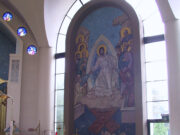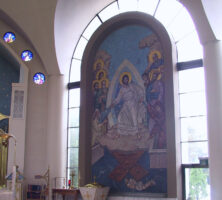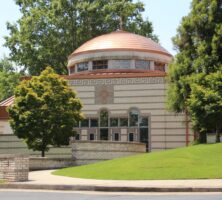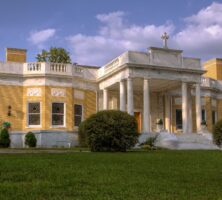Although various forms of Protestant Christianity may dominate the religious landscape of Georgia, an accurate picture of that religious landscape must include the vibrant and varied churches of Orthodoxy Christianity. Churches associated with Orthodoxy represent a continuation of early Eastern Christianity, in which the language, practices, and beliefs differ from those of other dominant forms of Christianity.
To the adherents of Orthodox churches, orthodoxy means “right belief” as defined by the earliest scriptures and traditions of Christianity. Churches in the state representing the three branches of Orthodoxy—the Eastern Orthodox churches, the Oriental Orthodox churches, and the Eastern Catholic churches—are located primarily within the metropolitan Atlanta area. While all these churches are Orthodox, they may differ regarding theology, worship practices, and church administration.
Eastern Orthodox
Of these three branches, the Eastern Orthodox churches constitute the largest group in Georgia. These churches share the theology expressed by the early creeds of Nicaea (A.D. 325) and Chalcedon (A.D. 451). Generally, the Sunday worship service uses the early Liturgy of St. John Chrysostom (A.D. 354-407); on special occasions, the worship service uses the Liturgy of St. Basil (A.D. 329-79).
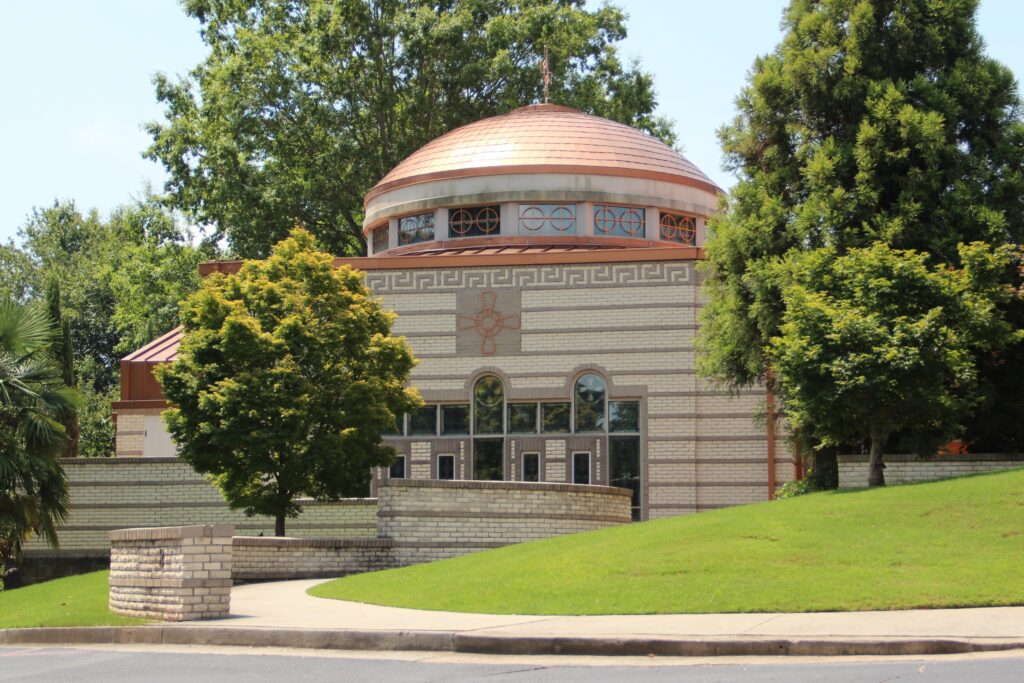
Photograph by Thomson200 / CC0
In Georgia the Eastern Orthodox churches are either Greek or Russian. In 1905 Greeks began to meet above a store on Whitehall Street in Atlanta, where a visiting priest conducted liturgy. The next year the Greek congregation purchased a Presbyterian church and converted it into a building suitable for their own worship. In 1928 the church purchased a synagogue, which it used until 1970. That year the Greek community relocated to Clairmont Road in Atlanta, where it built the Greek Orthodox Cathedral of the Annunciation. It contains beautiful icons and mosaics, such as the fifty-eight-foot Pantocrator, Jesus Christ Ruler of All, by Sirio Tonelli. In 1995 the diocesan offices for Greek Orthodox churches in the southeastern United States moved from Charlotte, North Carolina, to a space adjacent to the cathedral.
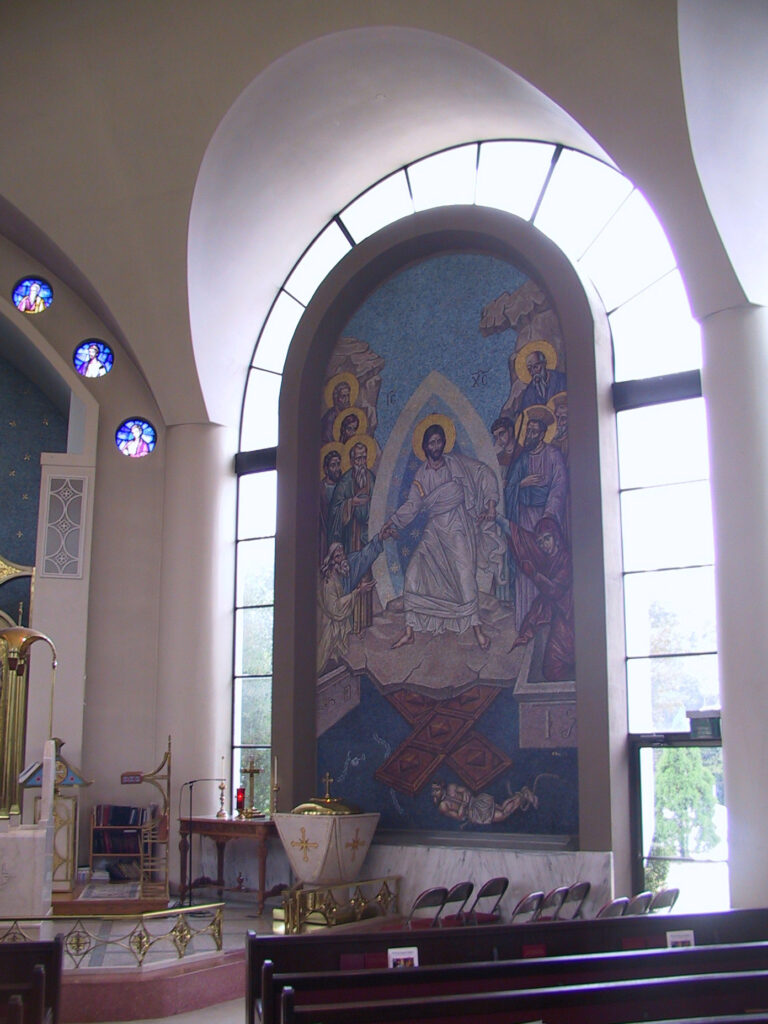
Photograph by Melinda G. Smith, New Georgia Encyclopedia
Although the Cathedral of the Annunciation is the state’s main Greek Orthodox church, with approximately 1,500 families, other Greek churches have been founded throughout Georgia. These include St. Paul in Savannah; Holy Trinity in Augusta; Holy Cross in Macon; Holy Transfiguration in Columbus; Holy Transfiguration in Marietta; St. Philothea in Athens; St. George Chapel in Brunswick; and Sts. Raphael, Nicholas, and Irene in Cumming.
Georgia also has churches associated with the Russian Orthodox Church. St. Mary of Egypt Orthodox Church was formed in 1976. Its members met in numerous locations before building the current church in Gwinnett County. Other metro Atlanta Russian Orthodox churches include St. John the Wonderworker and the Monastery of the Glorious Ascension.
Saint Elias Antiochian Orthodox Christian Church in Atlanta, founded by Lebanese and Syrian immigrants, is another major Eastern Orthodox congregation in the state.
Oriental Orthodox
Another branch of Orthodoxy is the Oriental Orthodox churches, which include Coptic (Egyptian), Syrian, and Ethiopian churches. In Roswell, St. Mary Coptic Orthodox Church represents this tradition. Though Coptic churches are designated as non-Chalcedonian, they seek unity; they joined the World Council of Churches in 1948, and they recognize, and are recognized by, other Orthodox churches. The Roswell church (built in 1994) has now received its iconostasis, a screen with icons at the front of the church.
Eastern Catholic
A final branch of Orthodoxy found in Georgia is the Eastern Catholic Church, which seeks to maintain the worship style of Eastern Orthodoxy but which acknowledges the authority of the Roman Catholic hierarchy. (Thus, they have “united” with Rome.) St. John Chrysostom’s Melkite Church in Atlanta represents this branch. The parish purchased the former Candler Mansion in the Druid Hills neighborhood in 1957 and converted it into a house of worship. It has 200-300 members from numerous ethnic communities.
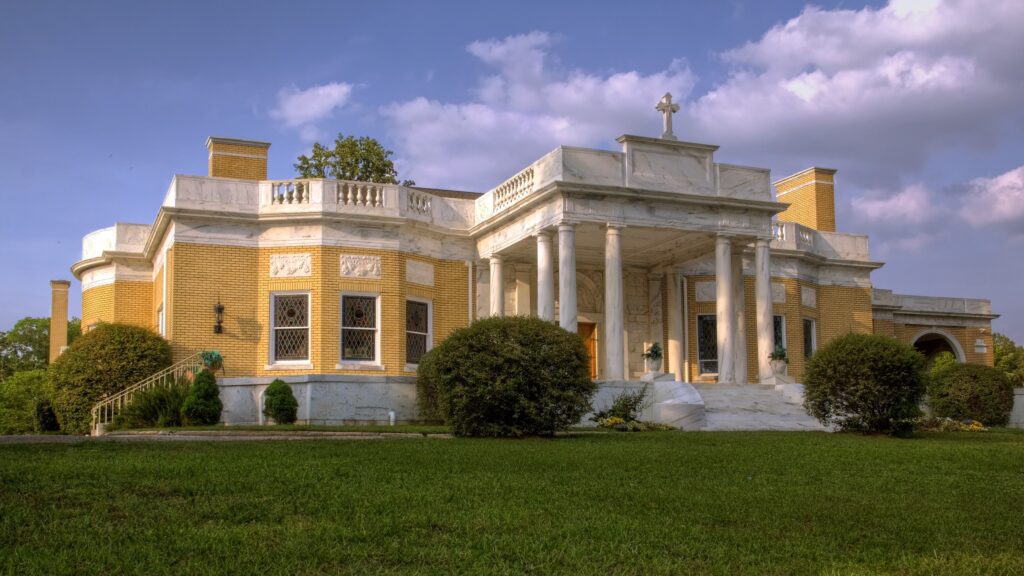
Photograph by Gerg1967


